The French have long loved the style of the classical world — what is now considered to be classic Parisian architecture originally took many cues from Ancient Greece and Rome. Signs of Egyptian influence might not be as plentiful, but they’re there to be found — and tracking down Paris’s Egyptian markers makes for a fun treasure hunt. Learning their history also helps explain why past Parisians fell under the spell of this exotic, mysterious land. And with the Atelier des Lumières, Paris’s first digital art museum, currently showing Egypt of the Pharaohs, there’s never been a better time for a new burst of Egyptomania …
Parc Monceau
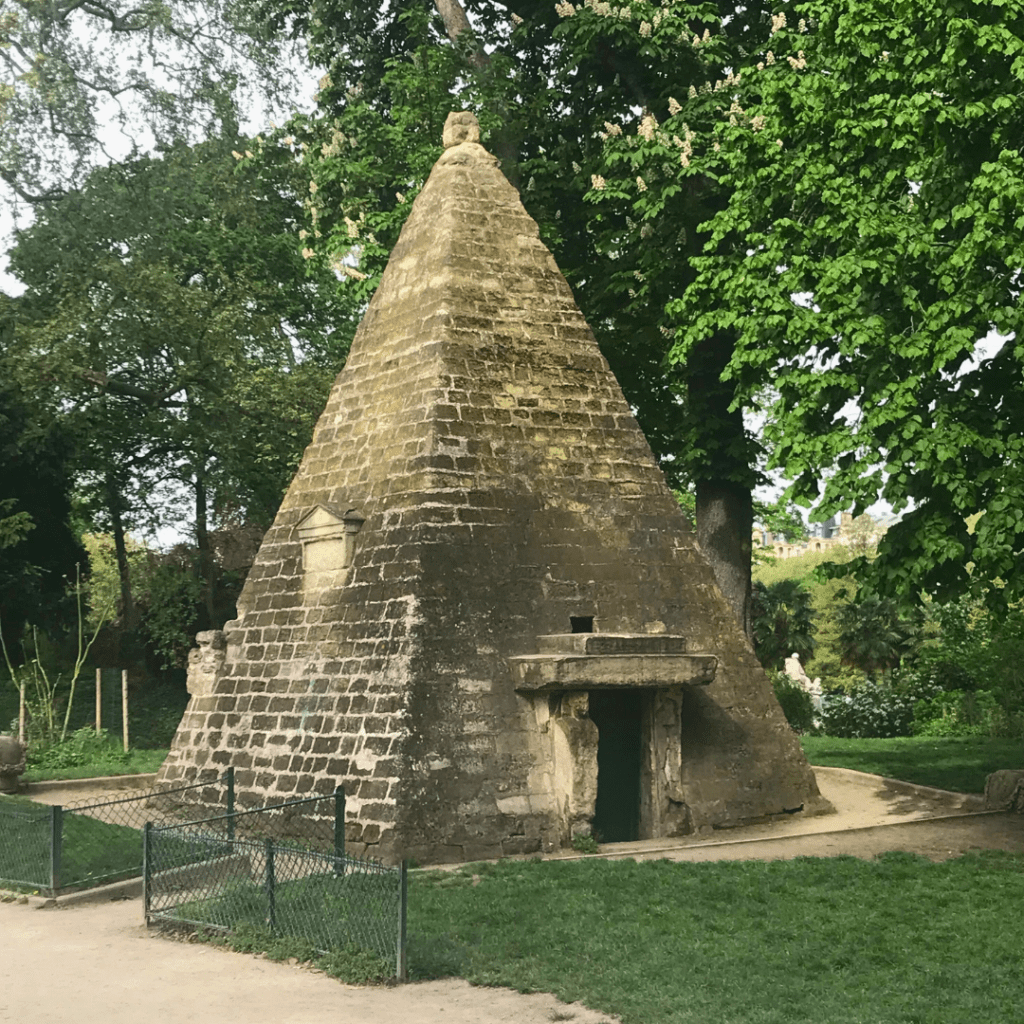
Parisian interest in Egypt was piqued mostly after the revolution, as we’ll see, but one early sign of Egyptomania can be found in this lovely, black-and-gold-gated park of the eighth arrondissement. The elegant enclave was, from 1769, the property of the Duc de Chartres, Philippe d’Orléans, who had a pleasure house built on this land. In the spirit of the Enlightenment, when French minds and culture opened themselves up to the world, the duke hired Louis Carrogis Carmontelle — an architect, scenic painter, and writer — to design a garden that would celebrate ‘all ages, all places.’ The result was a pays d’illusion, a landscape equivalent of Around the World in Eighty Days. Among the meandering streams and blooming islands, intricate mazes and flowerbeds, wooded groves and French parterres, various grottoes and rockeries, there was a world of follies: an Italian vineyard, a Dutch windmill, a Chinese bridge and pagoda, Greek ruins, Turkish tents … and a quirky elongated pyramid, which is still here today.
Place du Caire
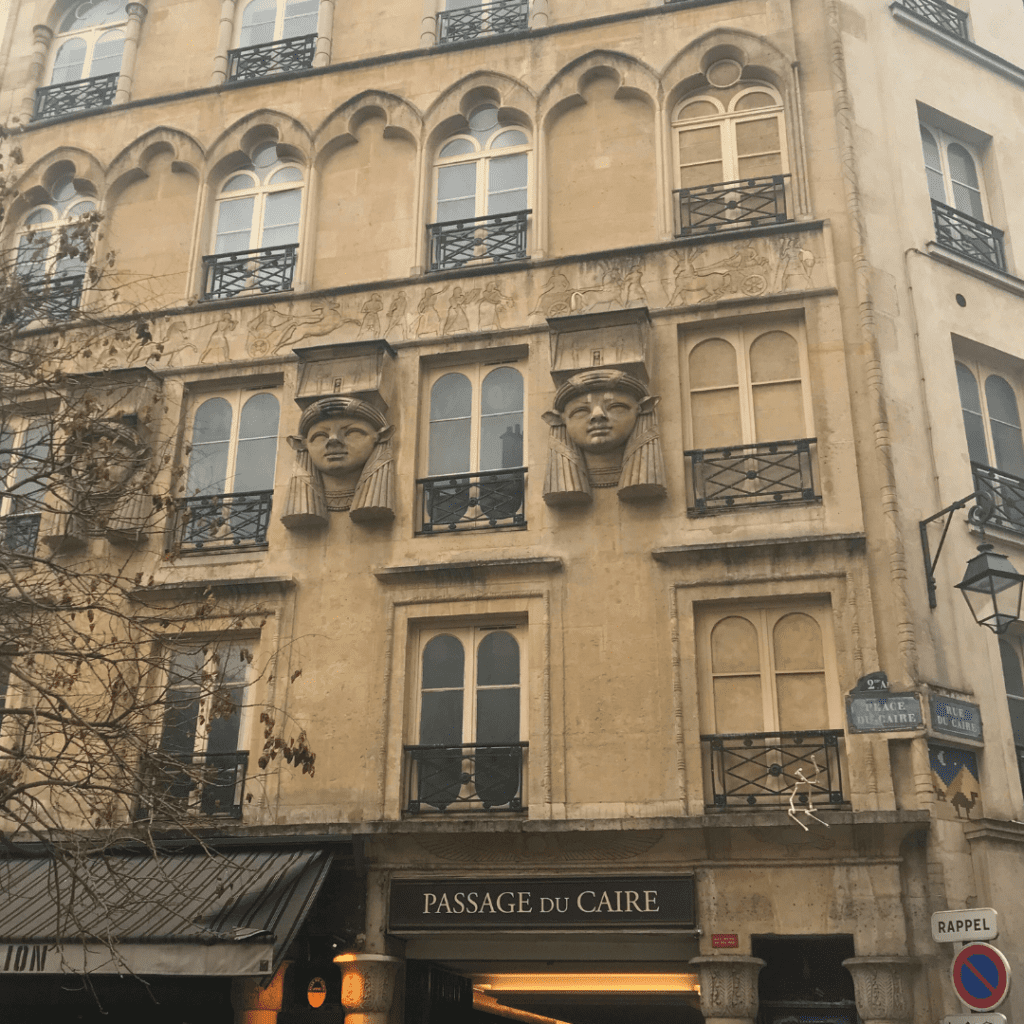
This second-arrondissement square dates from 1799, the year after Napoléon Bonaparte entered Cairo (during his military campaign of Egypt and Syria). The city was becoming as curious about Egypt as its future emperor had long been, an interest that was expressed not just in the name of this square (and the accompanying Rue du Caire and Passage du Caire, the city’s oldest covered arcade) but also in the building at number 2, with an array of Egyptian motifs (sphinx heads, column capitals shaped like papyrus buds, hieroglyphic-like etchings) carved onto the façade. (It now houses the Hôtel du Sentier.)
Fontaine du Fellah
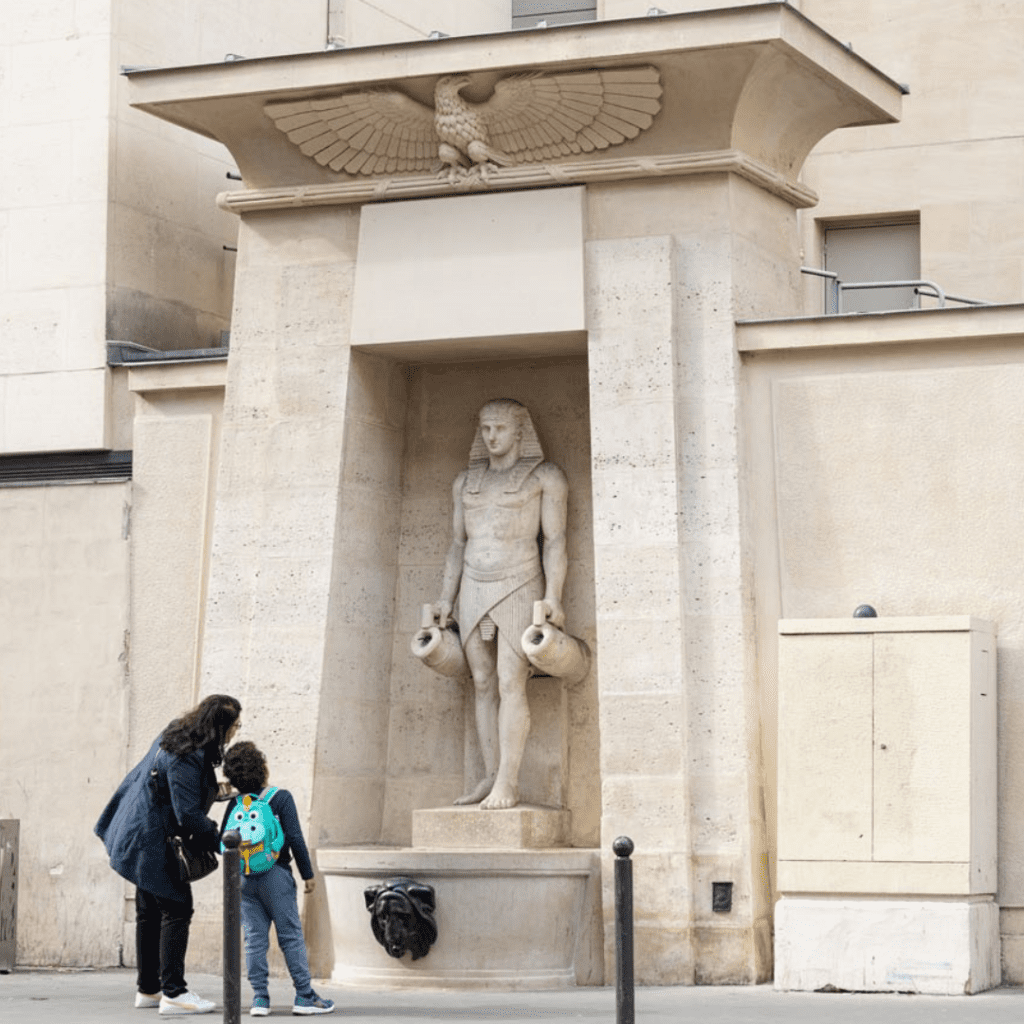
Napoleon might have eventually conceded defeat in his Egyptian campaign, but there were gains in other ways. He had taken along with him over 100 scientists, engineers, and artists, whose collective work helped form the foundation of the future field of study, Egyptology. The starkly eye-catching Fontaine du Fellah, which is located just next to the Rue de Sèvres entrance of the seventh-arrondissement métro station Vaneau, was built in 1806, one of fifteen sources of drinking water commissioned by Emperor Napoléon to commemorate his various battles. Designed to mimic the frontage of an Egyptian temple, it features a life-size statue of a fellah (peasant) — although its imperial twist comes in the form of the Napoleonic eagle hovering up top. Water poured from the fellah’s two pitchers until 2005, when it was found to be leaking into the métro station below.
Obélisque de Luxor

Egyptomania ramped up in western Europe with the 1822 decryption of the Rosetta Stone, which had been discovered by French soldiers in 1799. It was another Frenchman, scholar Jean-François Champollion, who made the breakthrough. Later in the 1820s, he fell in love with the pair of ancient obelisks standing on either side of the portal of the Luxor Temple, and urged King Charles X, who had opened an Egypt museum within the Louvre, to buy them. In the end, the ruler of Ottoman Egypt gifted the pair to France in 1830, though only one would end up making the journey (by custom-built boat). It was erected, in 1836, in the centre of Place de la Concorde, this location chosen due to the need for a culturally neutral monument in such a politically charged place. (Place de la Concorde had originally been built to celebrate King Lous XV, before the revolution transformed it into Place de la Révolution, and the gruesome main site of guillotine executions.)
Fontaine du Palmier

This monumental fountain, like the Fontaine du Fellah, was built by Emperor Napoléon to bring drinking water into central Paris. Located on the Place du Châtelet, it was inspired by a Roman triumphal column, although it commemorates numerous Napoleonic campaigns, including the Battle of the Pyramids (1798). His nephew, Napoléon II, enlarged the base and added the four water-pouting sphinxes in 1858, as part of his prefect Baron Haussmann’s makeover of Paris. (Haussmann’s Paris was, incidentally, inspiration for Cairo’s urban renewal efforts of the 1860s.)
Le Louxor
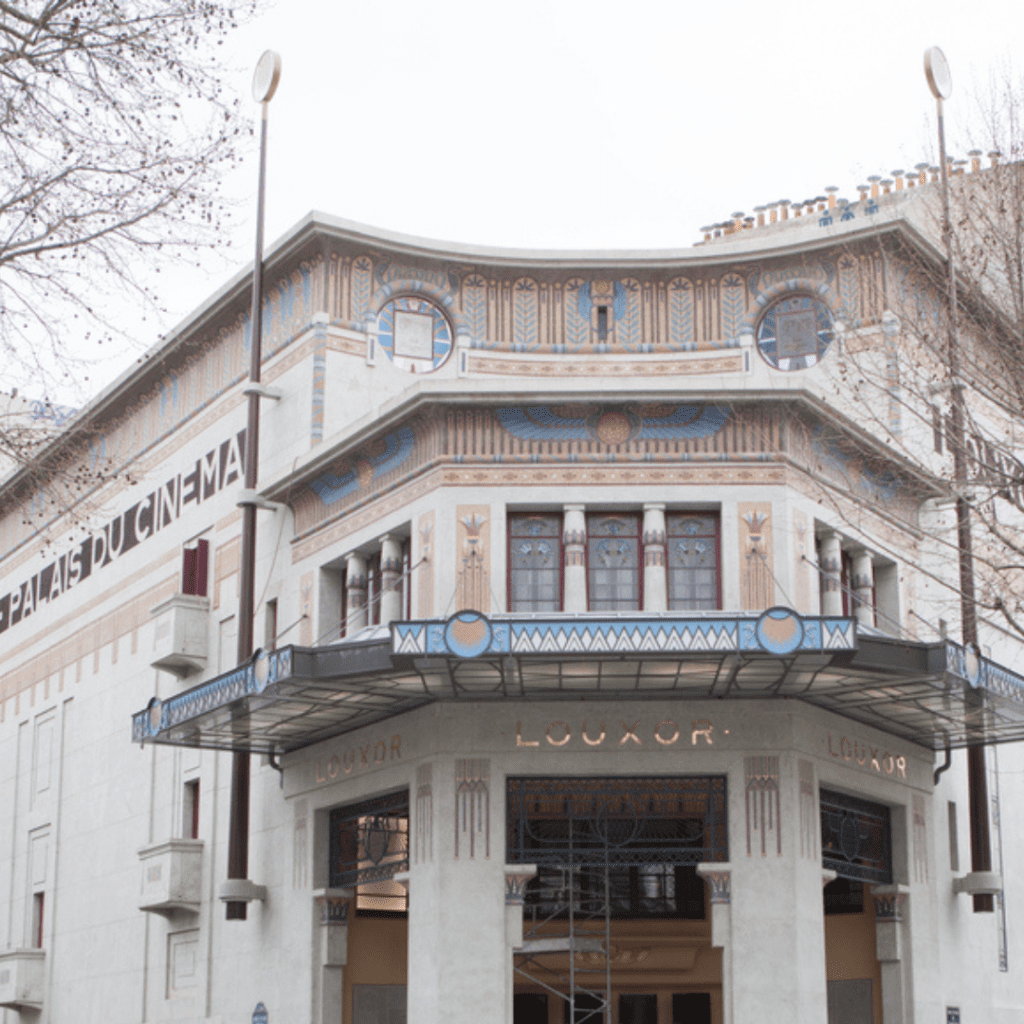
The 1922 discovery of Tutankhamun’s tomb triggered the twentieth-century obsession with all things Egyptian — a fascination that would influence movie directors, authors, and fashion designers. Architects, too — as seen in the Art Deco movement that would shape all areas of design until World War II. The Louxor cinema, in the tenth arrondissement, was ahead of this curve, opening in 1921 with lashings of Egyptian-inspired decorations, some realistic, some fantastical. It’s still an operational movie theatre today.
Pyramide du Louvre
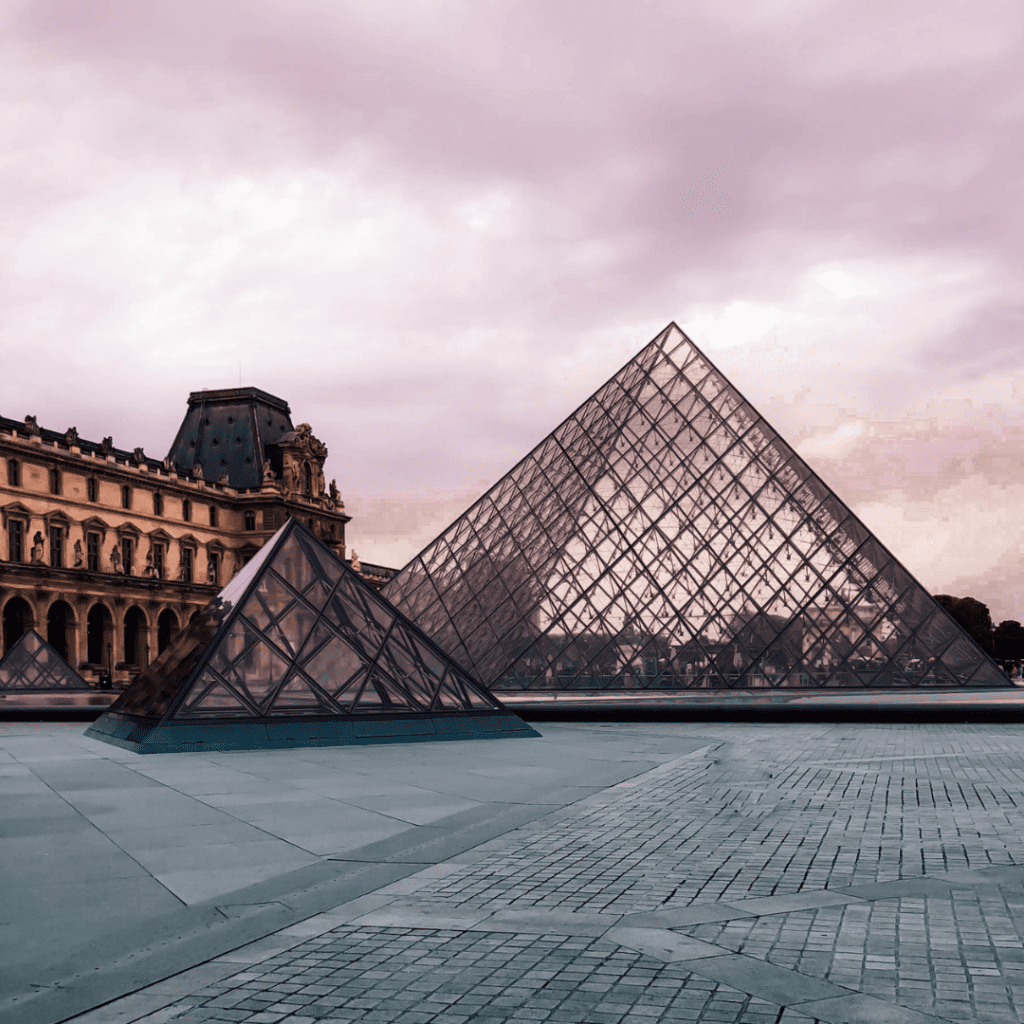
Finally, to one of the most famous (some would say ‘infamous’) of all Egyptian expressions in Paris … The glass-and-metal Louvre pyramid was built by famed architect I.M. Pei in the late 1980s, a commission by President François Mitterand, who asked for a solution to the Louvre’s chaotic and congested entrance process. Originally controversial, the pyramid is now widely accepted as a genius of design as much as purpose, allowing as it does for access to a central underground concourse that links to all wings of the museum. It also nicely highlights the Egyptian department within the Louvre. Egyptologist Jean-François Champollion (he of Rosetta Stone fame) became the curator of this department in the 1820s, when the Louvre bought thousands of finds from various Egyptian archaeological excavations. One of the many highlights is the Great Sphinx of Tanis, a stunning granite sculpture said to date to the 26th century.

